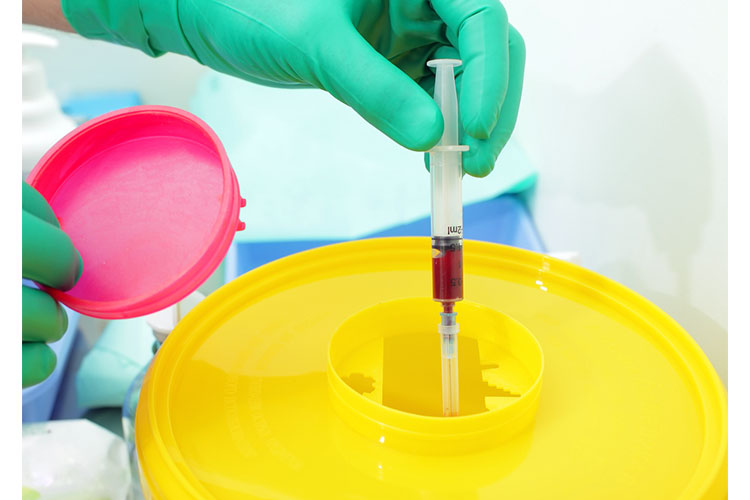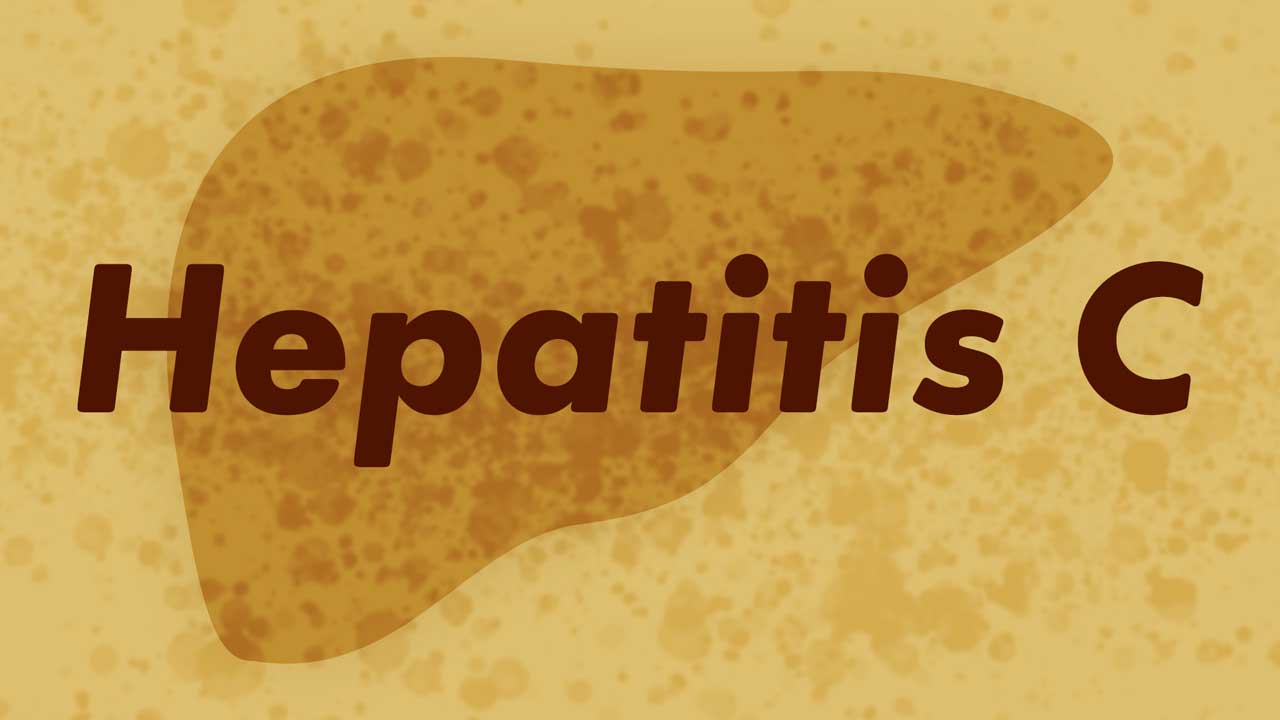Hepatitis C is a bloodborne infection caused by the hepatitis C virus (HCV). It causes inflammation and damage to the liver (WHO 2024).
Chronic hepatitis C infection is a leading cause of liver cancer (Cancer Council Victoria 2019).
Prior to March 2016, hepatitis C treatment in Australia involved weekly injections and oral medications that were known to bring on unwanted side effects and health complications. Today, however, chronic hepatitis C is curable with oral medications known as direct-acting antivirals (DAAs), which have limited side effects and in most cases, only need to be taken for eight weeks (Mayo Clinic 2023; NSW Health 2019).
Prevalence of Hepatitis C
More than 74,000 people are estimated to be living with chronic hepatitis C in Australia (Hepatitis Australia 2023).
Globally, that number is close to 50 million people (WHO 2024).
Rates of hepatitis C are disproportionately high in Aboriginal and Torres Strait Islander communities. Aboriginal and Torres Strait Islander people make up 3% of the Australian population, yet, in 2015, they accounted for 16% of cases of chronic hepatitis C. This is related to a variety of social and cultural determinants of health, many of which are due to the ongoing effects of colonisation - in particular, over-incarceration, which places Aboriginal and Torres Strait Islander people in prison environments where injecting equipment is commonly shared (Kirby Institute 2021; Hepatitis NSW 2024).
How is Hepatitis C Transmitted?
It’s a common misconception that hepatitis C can be transmitted by social contact such as kissing, hugging or sharing food. This is not the cause of hepatitis C transmission (Hepatitis Australia 2022a).
Transmission of hepatitis C in Australia occurs as a result of:
- Coming into contact with non-sterile tattooing, body piercing and acupuncture instruments
- During childbirth, from mother to infant, if the mother has high levels of the hepatitis C virus in her blood (there is about a 5% chance of this occurring)
- Needlestick injuries and accidental exposure to infected blood or blood products in occupational settings
- Through transfusion of infected blood or blood products in Australia before screening was introduced in 1990
- Sharing personal items that have traces of blood on them such as razors, toothbrushes or floss
- Through non-sterile medical and dental procedures, particularly in countries where hepatitis C is more common.
(Better Health Channel 2023; Hepatitis Australia 2022a)

Types of Hepatitis C
Acute Hepatitis C
- A person with acute hepatitis C will spontaneously recover without treatment
- ‘Acute’ in this context is defined as a period of hepatitis C that lasts for less than six months
- Acute hepatitis C is usually asymptomatic
- Between 15 and 45% of people with an HCV infection will experience acute hepatitis C.
(WHO 2024)
Chronic Hepatitis C
- Chronic hepatitis means that the virus will stay in the liver indefinitely until cured
- Chronic hepatitis C may result in complications such as cirrhosis or liver cancer
- Between 55 and 85% of people with hepatitis C will develop a chronic infection.
(WHO 2024)
Who is at Risk of Hepatitis C?
People who:
- Work in healthcare and may be exposed to infected blood
- Have injected drugs recently or in the past
- Have spent time in prison
- Had a blood transfusion or organ transplant prior to 1992
- Have a mother with a hepatitis infection
- Have HIV
- Have a sexual partner who is HIV positive or lives with hepatitis C
- Have undergone haemodialysis treatment
- Have been born, or have undergone medical procedures, in a country with high rates of hepatitis C
- Have received a tattoo or piercing in unsafe, unclean circumstances
- Have had blood-to-blood contact with another person.
(NSW Health 2019; Mayo Clinic 2023)
Symptoms of Hepatitis C

- Darkened urine
- Pale faeces
- Jaundice
- Flu-like symptoms (fever, joint pain, fatigue)
- Abdominal pain
- Decreased appetite
- Nausea, possibly with vomiting.
(NSW Health 2019; WHO 2024)
Symptoms may appear between two weeks and six months following exposure to the virus, but most cases are asymptomatic (WHO 2024).
Unfortunately, many people with chronic hepatitis C do not experience symptoms until their liver is damaged, which in some cases takes years. For this reason, it’s vital that patients get tested for hepatitis C if they think they may have been exposed to the virus (Hepatitis Australia 2022b).
Diagnosing Hepatitis C
There are two different blood tests that can be used to diagnose hepatitis C. They are:
- Hepatitis C antibody test: Can determine whether a person has ever had hepatitis C
- Hepatitis C PCR (RNA) test: Can determine whether a person currently has hepatitis C, as well as their viral load.
(Better Health Channel 2023; Hepatitis Australia 2022c)
Treating Hepatitis C
In March 2016, new medications were introduced to treat chronic hepatitis C in Australia. These medications are called direct-acting antivirals (DAAs). They:
- Have a cure rate of over 95%
- Have no or few side effects
- Usually only need to be taken for 8 weeks (in most people), or for 24 weeks in certain instances
- Are taken orally
- Are subsidised by the Australian Pharmaceutical Benefits Scheme.
(NSW Health 2019; Better Health Channel 2023)
Preventing Hepatitis C

- Use sterile equipment
- Avoid sharing any personal equipment that could draw blood (e.g. toothbrushes, razors, nail files or nail scissors)
- Ensure that piercing instruments are clean (e.g. body piercing, tattooing, acupuncture or electrolysis instruments)
- Practice safe sex (e.g. by using condoms and dental dams), as unprotected sex involving blood or damaged skin poses the highest risk
- As a healthcare worker, follow infection control guidelines strictly, particularly when blood or body fluids are being handled
- Safely dispose of found or used needles and syringes
- Cover sores or open wounds with appropriate bandaids/bandages
- Wear single-use gloves.
(Better Health Channel 2023; SA Health 2022; WHO 2024)
Conclusion
While there is no current vaccine for hepatitis C, new treatments are simple, safe and highly effective, with a cure rate of more than 95%. Treatment also has the added benefit of preventing transmission to others (Better Health Channel 2023).
Test Your Knowledge
Question 1 of 3
How effective are direct-acting antivirals in curing chronic hepatitis C?
Topics
Further your knowledge
References
- Better Health Channel 2023, Hepatitis C, Victoria State Government, viewed 2 October 2024, https://www.betterhealth.vic.gov.au/health/conditionsandtreatments/hepatitis-c
- Cancer Council Victoria 2019, Hepatitis and Liver Cancer, Cancer Council Victoria, viewed 2 October 2024, https://www.cancervic.org.au/get-support/for-health-professionals/community-health-professionals/hepatitis-b-and-liver-cancer
- NSW Health 2019, Hepatitis C Fact Sheet, New South Wales Government, viewed 2 October 2024, https://www.health.nsw.gov.au/Infectious/factsheets/Pages/hepatitis_c.aspx
- Hepatitis Australia 2023, Hepatitis C, Hepatitis Australia, viewed 2 October 2024, https://www.hepatitisaustralia.com/Pages/Category/hepatitis-c
- Hepatitis Australia 2022b, Hepatitis C Symptoms, Hepatitis Australia, viewed 2 October 2024, https://www.hepatitisaustralia.com/symptoms-of-hepatitis-c
- Hepatitis Australia 2022c, Testing for Hepatitis C, Hepatitis Australia, viewed 2 October 2024, https://www.hepatitisaustralia.com/testing-for-hepatitis-c
- Hepatitis Australia 2022a, What is Hepatitis C?, Hepatitis Australia, viewed 2 October 2024, https://www.hepatitisaustralia.com/what-is-hepatitis-c
- Hepatitis NSW 2024, Hepatitis C and Aboriginal Communities, Hepatitis NSW, viewed 2 October 2024, https://www.hep.org.au/hep-c/hep-c-aboriginal-communities/
- Kirby Institute 2021, Progress Towards Hepatitis C Elimination Among Aboriginal and Torres Strait Islander People in Australia, University of New South Wales, viewed 2 October 2024, https://kirby.unsw.edu.au/report/progress-towards-hepatitis-c-elimination-among-aboriginal-and-torres-strait-islander-people
- Mayo Clinic 2023, Hepatitis C, Mayo Clinic, viewed 2 October 2024, https://www.mayoclinic.org/diseases-conditions/hepatitis-c/symptoms-causes/syc-20354278
- SA Health 2024, Hepatitis C - Including Symptoms, Treatment and Prevention, Government of South Australia, viewed 2 October 2024, https://www.sahealth.sa.gov.au/wps/wcm/connect/public+content/sa+health+internet/conditions/infectious+diseases/hepatitis/hepatitis+c+-+including+symptoms+treatment+and+prevention
- World Health Organisation 2024, Hepatitis C, WHO, viewed 2 October 2024, https://www.who.int/news-room/fact-sheets/detail/hepatitis-c
 New
New 

